A comprehensive guide to lye water (Kansui), a food-grade alkaline solution used in many dishes. Recipe for an easy homemade version is included.
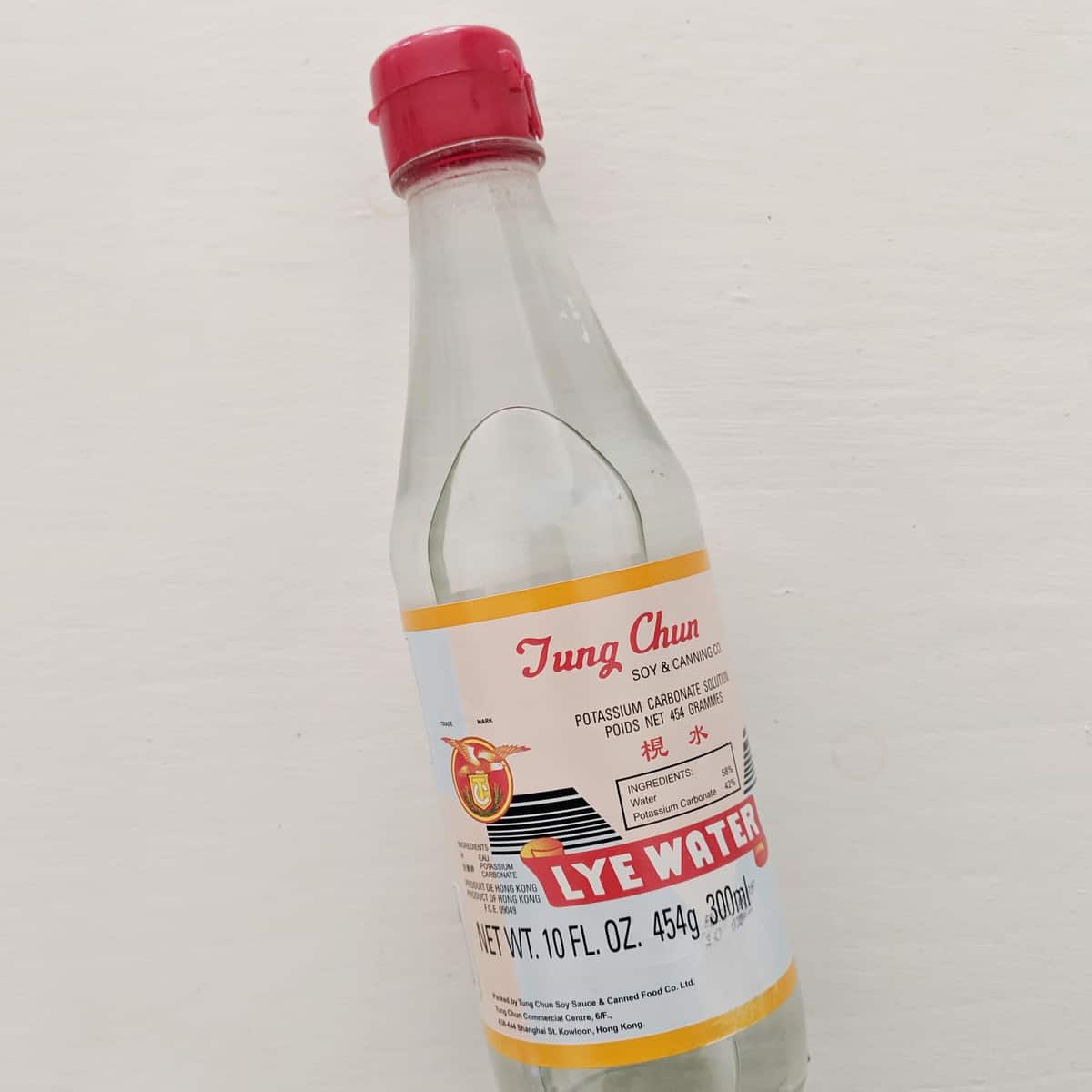
Jump to:
What is lye water?
Lye water (aka Kansui, 枧水), is a food-grade alkaline solution that’s used in many cuisines around the world. The ready-to-use, bottled one mainly contains potassium carbonate (K2CO3), a white alkali salt that’s soluble in water.
It looks like ordinary water: clear, transparent and odourless. But when you add it to water, the mixture will appear slightly cloudy. In general, lye water exhibits the following functions in the food production process:
- It gives a yellow tint to food
- It lends a mild but noticeable alkaline flavour
- It neutralizes the acid in food
- It’s used to preserve/cure certain foods
Recipes using lye water
You might not be familiar with the term lye water, but highly likely you’ve eaten food that contains this ingredient. You can find it in ramen noodles, Chinese mooncakes, pretzels, bagels, tortillas, cured olives, and many other foods.
Here are some classic Chinese recipes that use it:
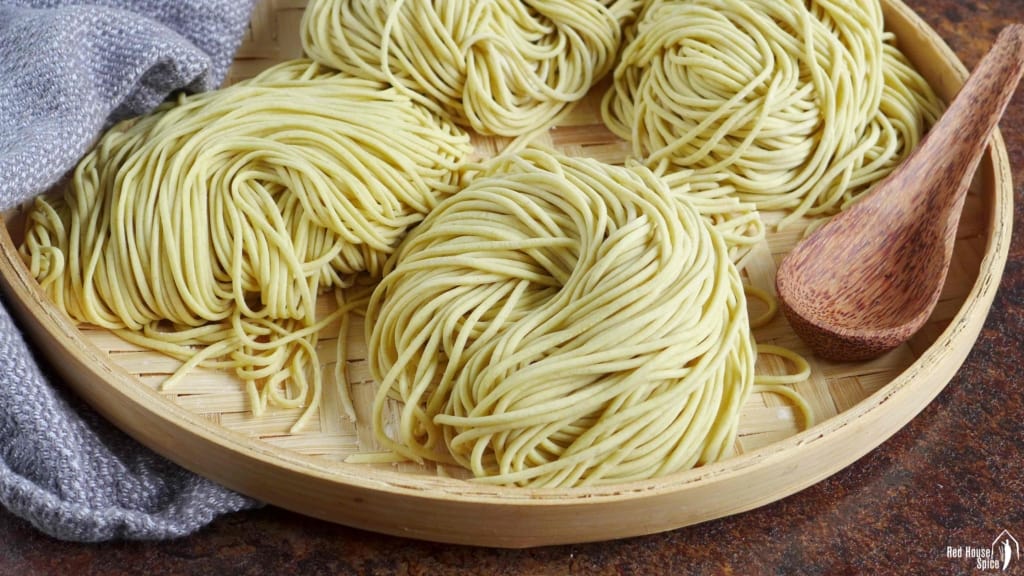
Alkaline Noodles (碱水面), aka Ramen Noodles. Lye water helps the noodles to become elastic, springy, and slightly yellow. It also makes them less likely to become mushy when added to broths and soups.
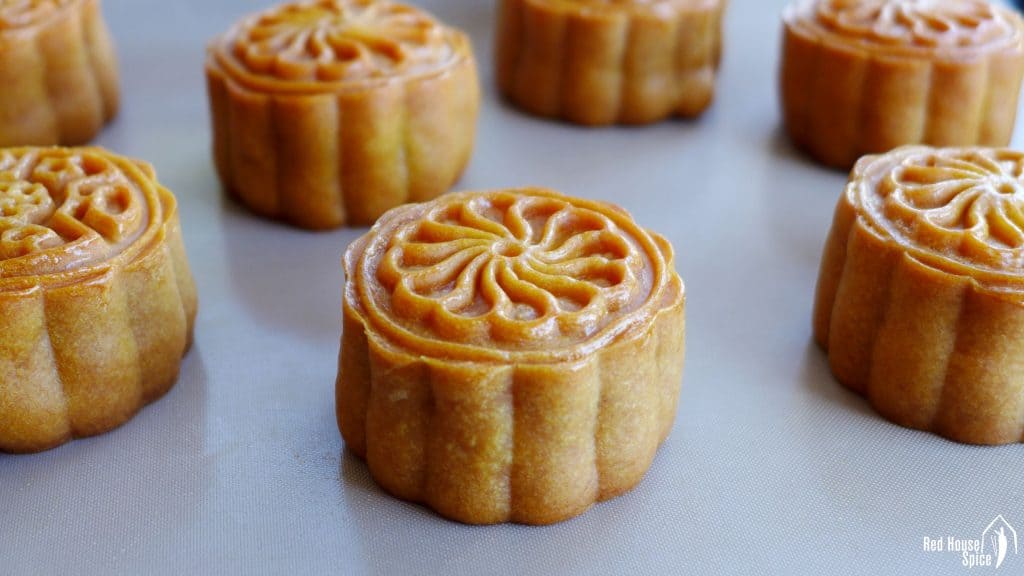
Cantonese Style Mooncakes (月饼). Lye water is used to raise the PH of the dough (neutralize the acid in the syrup). It also helps to gain an appetizing brown colour after baking and a fluffy tender texture.
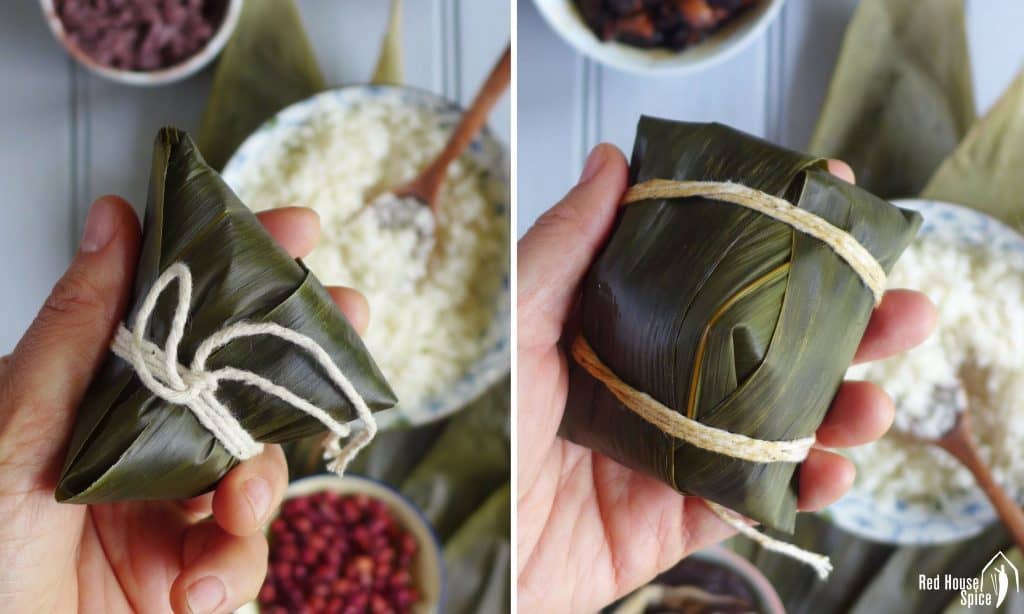
Zongzi (粽子), aka Chinese Sticky Rice Dumplings. My recipe for Zongzi doesn’t involve lye water, but in southern regions of China, Alkaline Zongzi (碱水粽) is very popular. It’s simply added to the soaked glutinous rice. Other preparation procedures remain the same.
How to use it
When lye water is used in moderation (usually a minimum amount), both the colour and taste that it creates are pleasant. However, an overdose of lye water would result in bitterness. So the general advice would be:
- Always follow the quantity suggested in a recipe.
- It’s ok to reduce the volume if you prefer a lighter colour or a milder taste.
- Be extra careful if you wish to increase the quantity. Add a tiny bit more at a time to test.
🛎 NB: Although lye water is perfectly safe to use in food, you should never taste it on its own or touch it with bare skin. It’s important to keep it away from children.
Where to buy
Lye water is commonly available at Chinese/Asian stores. You should be able to find it online as well (e.g. Amazon). It usually comes in glass bottles. Apart from Lye water or Kansui, the label may show other words like potassium carbonate solution, 枧水, 雪碱水, etc.
How to make your own
Don’t have easy access to shop-bought lye water? Don’t despair! It’s very easy, and inexpensive, to prepare a homemade version as a substitute.
You only need two ingredients for homemade lye water: Baked baking soda and water. Mix them at a 1:4 ratio. Then you’re ready to use it! It couldn’t be simpler, right? Read on to discover the why and how.
Why bake the baking soda?
The simple answer to this question is that you’ll create a stronger alkaline substance by heating the baking soda. When mixing it with water, you’ll get a solution that acts in a similar way as shop-bought lye water.
Want to have a deeper understanding? Read what Harold McGee, the author of On Food and Cooking, has written in his article For Old-Fashioned Flavor, Bake the Baking Soda. It explains in detail the food science behind this particular process.
How to bake baking soda
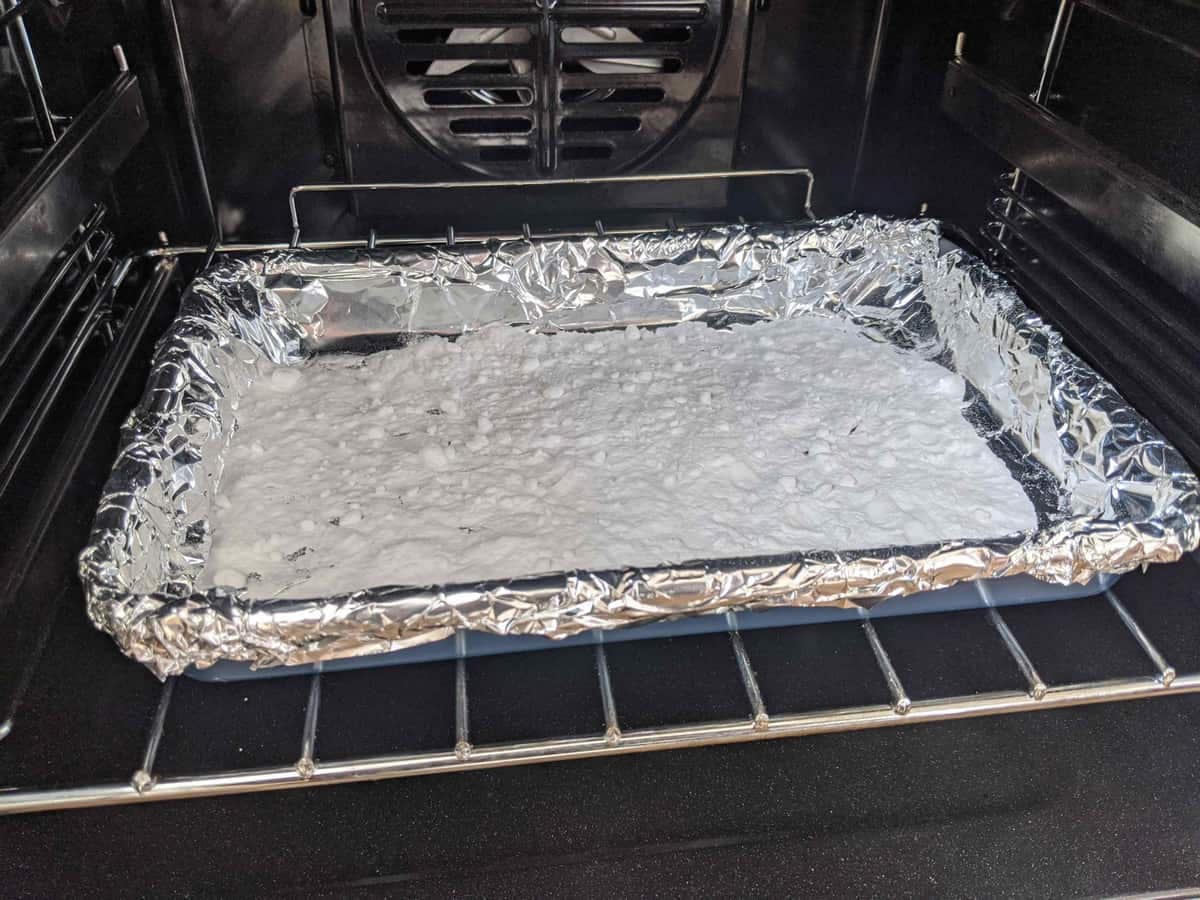
Follow these steps to bake the baking soda in the oven:
- Preheat the oven to 120°C (250°F).
- Cover a baking tray with tin foil (aluminium foil). Spread an even layer of baking soda over the foil.
- Put the tray into the preheated oven. Bake for 1 hour.
- Leave to cool naturally then transfer to an airtight container.
🛎 NB: Make sure that your hands don’t have direct contact with baked baking soda as it may cause irritation. Wear gloves if available.
How to make a solution
For the homemade version, you’ll need to mix baked baking soda with water at a ratio of 1:4. That is to say, for example, for 1 teaspoon of baked baking soda, you’ll need 4 teaspoons of water to dilute.
It’s best to mix baked baking soda and water when you’re ready to use it for a recipe. It’s not recommended to mix them in a big volume beforehand.
🛎 NB: Make sure you always use a dry, clean spoon to get the baked baking soda out of the container. Also, seal the container immediately after use since moisture would harden the baked baking powder.
Can I use baking soda directly
You might encounter recipes suggesting that you mix unbaked baking soda with water. Here are two reasons why you should think twice before undertaking this action:
- When mixed with water, unbaked baking soda creates a much milder alkali solution which will not have as much of an impact on the dishes that you use it in.
- Unbaked baking soda does not completely dissolve into water (Baked baking soda does).
📋 Recipe
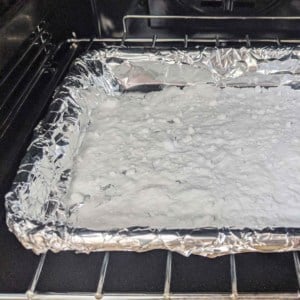
Homemade Lye water (Kansui)
Ingredients
- Baking soda
- Water
Instructions
- Preheat the oven to 120°C (250°F).
- Cover a baking tray with tin foil (aluminium foil). Spread an even layer of baking soda over the foil.
- Put the tray into the preheated oven. Bake for 1 hour.
- Leave to cool naturally then transfer to an airtight container (see note 1).
- When needed, mix 1 part of baked baking soda with 4 parts of water (see note 2). Use the solution in recipes for your desired dishes.
NOTES
NUTRITION DISCLOSURE: Nutritional information on this website is provided as a courtesy to readers. It should be considered estimates. Please use your own brand nutritional values or your preferred nutrition calculator to double check against our estimates.


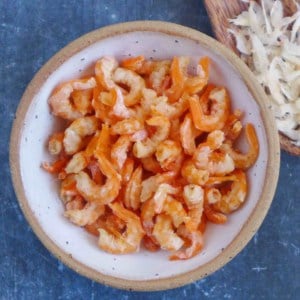
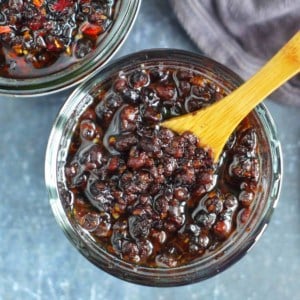
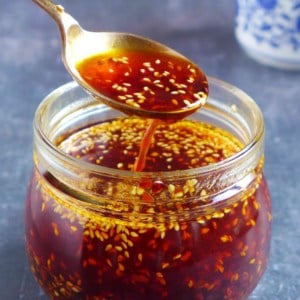
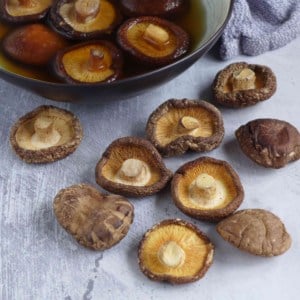
Is the aluminum foil essential here or one can use a stainless container?
Yes, you can. Just make sure the baking powder is spread out reasonably thin and evenly.
The linked website for “Baked Baking Soda at New York Times” is paywalled. The Curious Cook column has its own website where the article is available to all.
Thank you Frederick for this helpful information! I’ve just amended the link so it goes to Harold McGee’s website.
This is interesting. How do I use lye water in wonton wrapper recipe? What is the ratio to add to homemade wonton wrapper?
You can use the same ratio in my recipe for ramen noodles and use a pasta machine to roll out a very thin sheet for cutting out wonton wrappers.
Receitas deliciosas e com explicações práticas , garantindo o sucesso sucesso do prato. Muito obrigada
You’re welcome Inezita! Glad you find my recipes helpful.
Many thanks for this helpful recipe. Now I can make pretzels!!!
Excellent article! How do we store the baked baking soda and how long does the baked powder keep following storage tips? How do we know if it is no longer good to use?
Keep the baked baking powder in an airtight jar so that it won’t absorb any moisture. Store it in dry place away from direct sunlight. I don’t think it will “go off” but its effect might reduce over a long period of time. Unfortunately I don’t really have any scientific knowledge to give you a precise answer.
Hi, thank you for the recipe.
May I know the material of the jar that’s safe to be used to store baked baking soda? Is it plastic or glass?
I recommend you use a glass jar with a tight lid.
I’m a chemist. When you ‘bake’ baking soda, you are converting it from sodium bicarbonate to sodium carbonate. The bicarbonate is Na2HCO3, whereas the carbonate is Na2CO3. The carbonate is much more alkaline than the bicarbonate (and is the stuff you’d find in Kansui – the lye mixture used to make proper egg noodles). If the carbonate absorbs moisture, some of it reverts back to bicarbonate due to CO2 in the air. So you need to keep it in an airtight container and not make too much in one go unless you use a lot of it.
It’s worth noting that in Japan, people have used bicarbonate to convert normal spaghetti-type pasta to egg noodle-type pasta by boiling it in a bicarbonate solution for some years. It’s a ‘hack’, if you like, and gets about four fifths of the way to proper egg noodles.
That’s an interesting hack! Thanks Mac for sharing your knowledge.
How do I dispose of the lye water that I have left when I’m done with the recipe?
Is it hazardous to the environment and do I have to dilute it further before disposing in my drain?
It’s not hazardous to the environment. You can simply pour it into the drain.
Should you ever venture to the Netherlands, keep in mind that what you call “baked” baking soda is sold here very cheaply in the laundry aisle of every supermarket as simply “soda”, which is the same as your “washing soda”. A couple of kilo’s in your return bagage could last you a verrry long time!
Washing soda also exists in my country, however every packet comes with a warning do not use in food. I looked into it and the explanation seems to be that it isn’t food grade as it is produced as household chemical with completely different standards.
Yes, it’s important that you always check the information on the package.
Silly question, when you said 1:4, that mean 1g of baked baking soda for 4g of water?
Hi Ben! The ratio is by volume (not by weight). For example, for 1 teaspoon of baked baking soda, you’ll need 4 teaspoons of water to dilute.
I also have the same question. That’s a lot of baking soda. Some sites say 1 tsp of baking soda to 1 cup water.
For the homemade alternative to lye water, you need to mix 1 teaspoon of BAKED baking soda with 4 teaspoons of water. You only need a very small amount of this mixture for recipes.
Hi, is it possible to use baking paper instead of aluminium foil? Thanks.
Yes you can. Happy baking!